Alex Ferguson once said the words: “Attack wins you games, defence wins you titles”, and Portsmouth are currently ticking one of those two boxes, having conceded just two goals in their opening six EFL League One games. They have failed to replicate the same efficiency and consistency in front of goal. However, they will want to rectify this if they are to achieve promotion to the Championship.
While their attacking is far from terrible, so far this season, John Mousinho’s side has experienced some inconsistency in their attacking output. Pompey have started strongly – three wins and three draws from the opening six games, and they are the only team remaining in League One who are yet to lose a game, but on multiple occasions, they seem to have scored less than you would expect, as they have been creating a healthy amount of chances on goal.
This scout report will provide a tactical analysis of Mousinho’s attacking tactics, with the analysis looking at their output through match stills as well as considering statistical factors. As well as looking at Pompey’s conversation rates in front of goal, the analysis will also explore how Portsmouth like to create chances from wide areas.
Attack overview
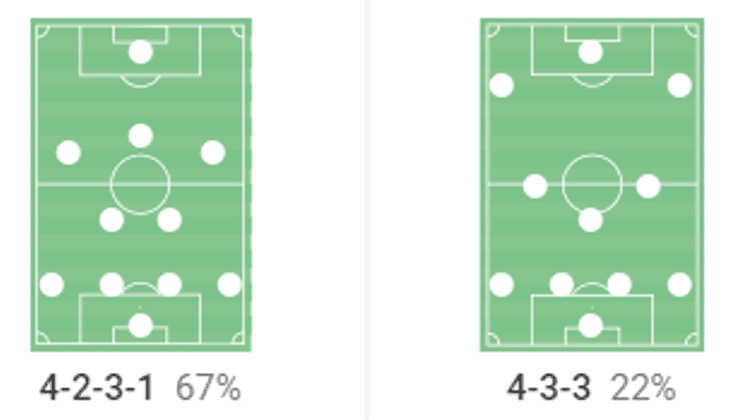
So far in 2023/24, we’ve seen Portsmouth operate primarily in a 4-2-3-1 shape, which has been their go-to formation all season apart from matchday one against Bristol Rovers, where they used a 4-3-3 instead.
In terms of personnel in wide areas, there has been some flexibility for Pompey, and we have already seen a number of names operate in varying attacking positions. Abu Kamara, on loan from Norwich City, has been seen more regularly than most – his ability to play on either flank gives Pompey a boost too. New arrival Anthony Scully, who signed on at Fratton Park over the summer from fellow League One club Wigan Athletic, has also become a regular feature for Mousinho, although the winger has missed the last couple of games through injury. Colby Bishop has been Pompey’s main man up front, starting every league game so far – he has three goals so far this season.
Issues with consistency
At the time of writing, Portsmouth sit fifth in the league, quickly establishing themselves as a team who are difficult to break down and score against, as mentioned in the intro. In six games, they have scored nine goals, which is a healthy total for the early stages of the season, but when we look deeper than the surface, that number needs to be higher if Pompey want to go up this season. In this segment, we will dive into the data behind their shortcomings in attack to try and highlight any problem areas.
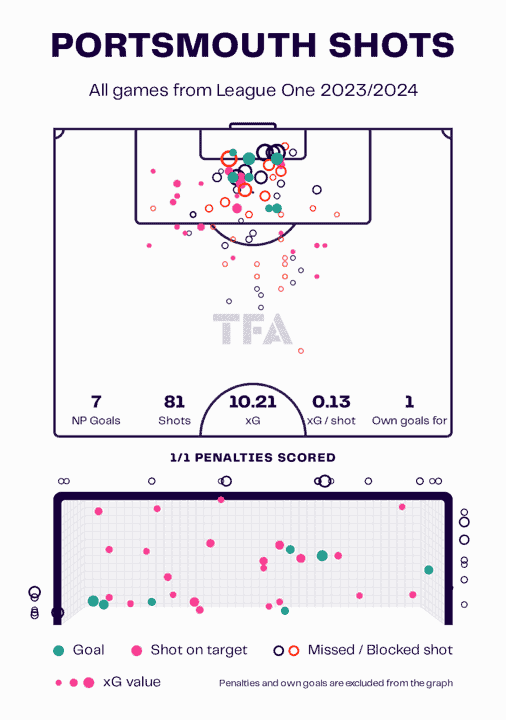
Their xG map begins to paint a picture as to why they aren’t scoring more despite creating a good number of chances on goal. They’ve scored seven non-penalty goals, which, in six games, is not promotion form really – it can be argued that, so far, in an overall sense, their impressive defensive record is the biggest reason for them starting strongly.
They are also underperforming their xG register by some distance, which indicates a lack of ability to finish good chances in front of goal, but is Colby Bishop to blame for that? In an xG sense – no, as Bishop is outperforming his individual xG. Pompey’s xG is the second highest in League One currently, second only to Peterborough United, so there is proof that they are consistently creating chances, but they are finding difficulty in converting them.
Interestingly, while they have currently recorded the fourth-highest number of shots this season (82), they only rank ninth for shots on target % (36.6%) – this only adds to the evidence that they are snatching at chances. Another promising note for Pompey fans is that their team has recorded the highest total number of touches in the opposition box, so getting into the final third again is no struggle for the former Premier League side.
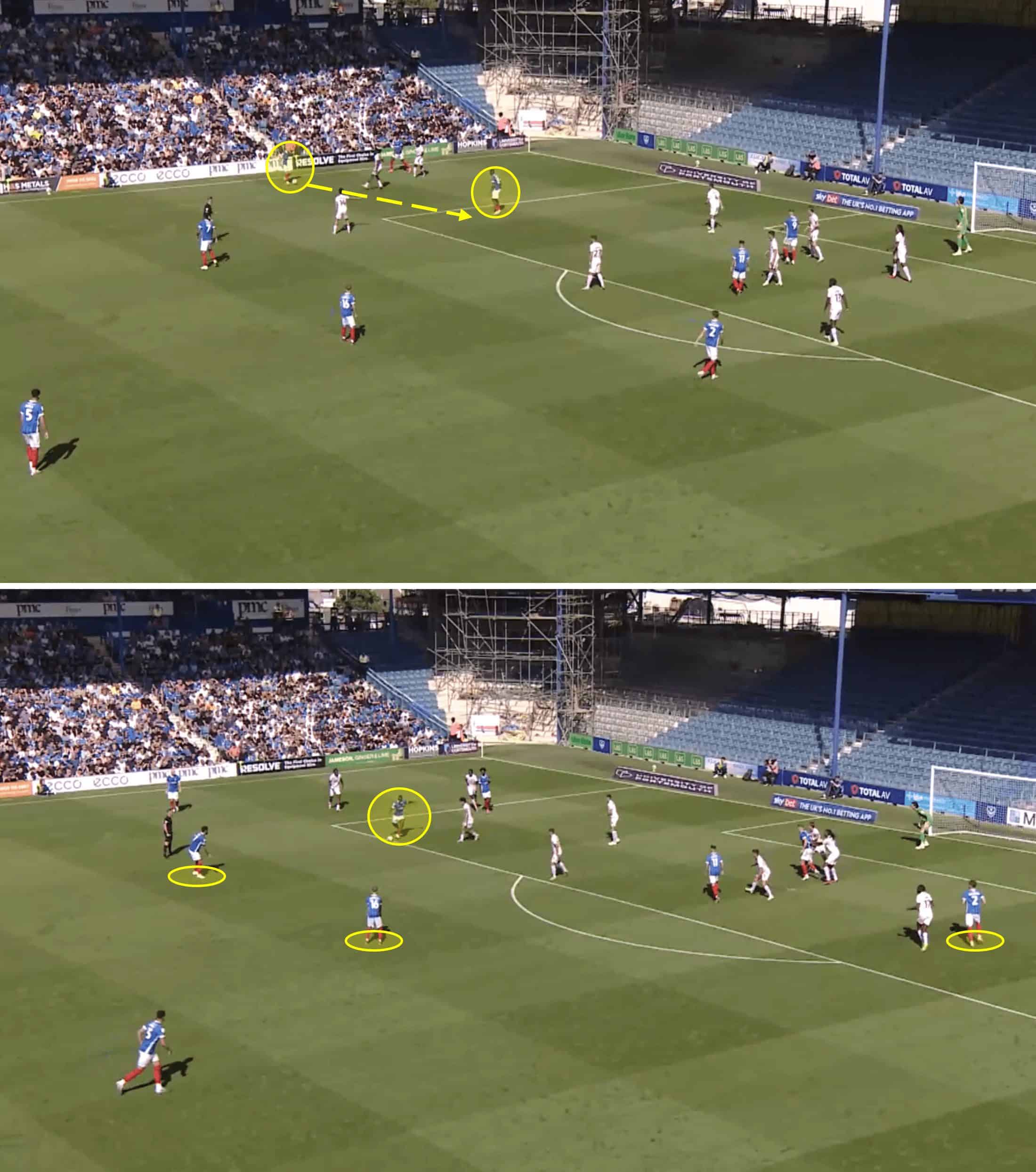
Now that we’ve established part of the problem from a statistical standpoint, we can also see some of Pompey’s problems in relation to the prior highlighted issues.
The image above, for example, shows Portsmouth displaying some smart play from the left flank, exploiting poor marking from the opposition to work the ball inside the box. While the right angle/opportunity to unleash a shot never presented itself, the Pompey player took the shot anyway, ballooning the ball out for a goal kick when he had other positive passing options that would’ve allowed his side to maintain attacking pressure.
This is a mixture of two key factors – poor decision-making on an individual basis and tactical instruction. Portsmouth usually take their shots quickly once they reach the box, but this time, that should not have been the case.
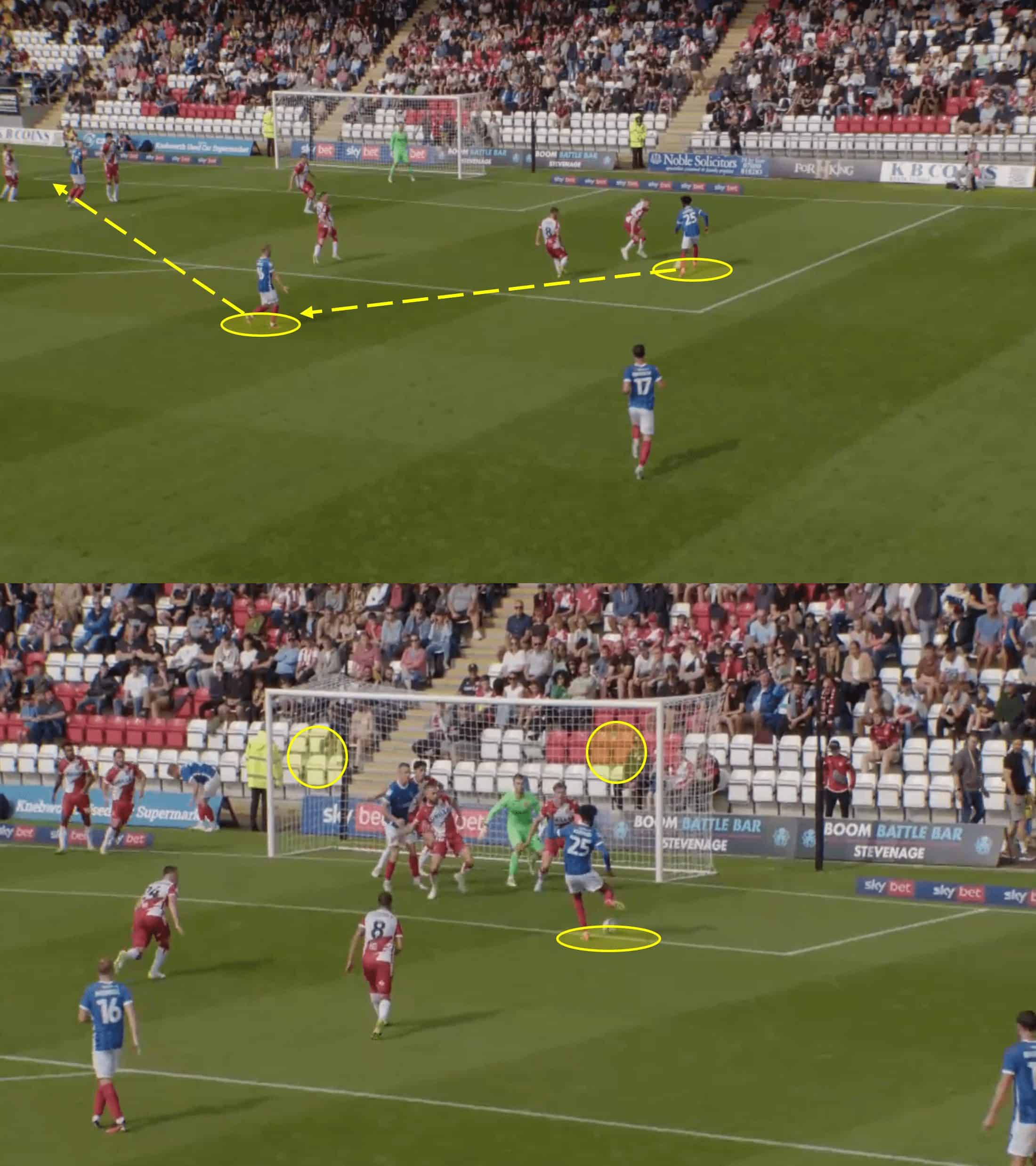
This example shows a Portsmouth attack full of good decision-making but poor execution at the end of the move. Abu Kamara, who will feature later on in the analysis too, progressed this move well thanks to his positive play on the ball, taking the ball into the box before playing a pass back to the supporting midfielder – he then swings a first-time cross towards the far post where three Pompey shirts await. One of those shirts made first contact with the ball, and after a slight scramble, the ball fell to Kamara from less than six yards out.
Granted, the goalmouth is packed, and the opposition defender showed good reactions to eventually close Kamara down, but the 20-year-old’s effort on goal had no direction or conviction and was blocked as a result. This occurred in a game where Pompeu drew 0-0 – of course; the draw does not rest on Kamara’s shoulders; this is just an example of how important it is to have the right mental attributes in key moments.
Primary attacking weapon – wide areas
The majority of Portsmouth’s goals and promising attacks have come from wide areas, and they have also displayed signs of strength from set-pieces too. While attacking the flanks isn’t a groundbreaking tactic from Mousinho, the way his team executes the build-up phase to eventually shift the ball into wide areas is extremely effective. Utilising both teamwork and individual ability, Portsmouth are a very dangerous team when attacking from the flanks.
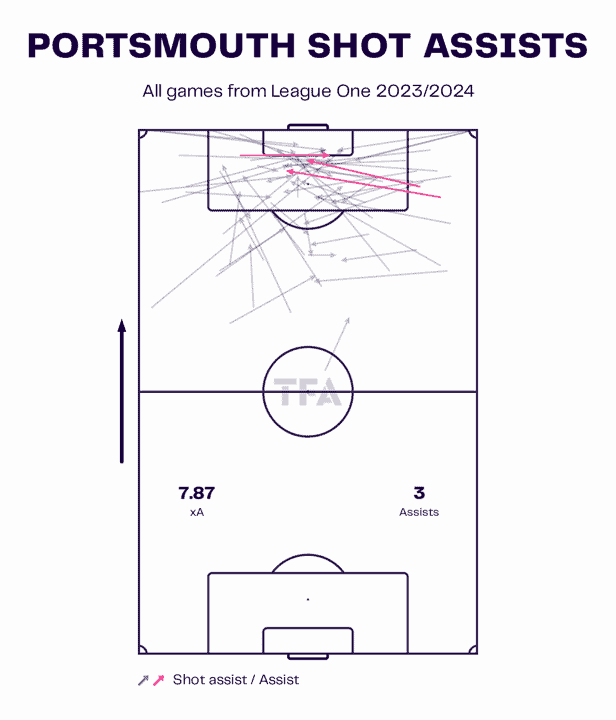
Pompey’s xGA map gives us an early indication as to where many of their chances are going to stem from over the course of the season – so far, most of the chances they’ve created and the goals they’ve assisted have been a product of build-up play in wide areas. In fact, Pompey rank first in the league for the number of crosses (149 – 20.86 per 90 mins) and offer the third highest accuracy with 41.6%, proving that wide-play is an effective form of attack for them.
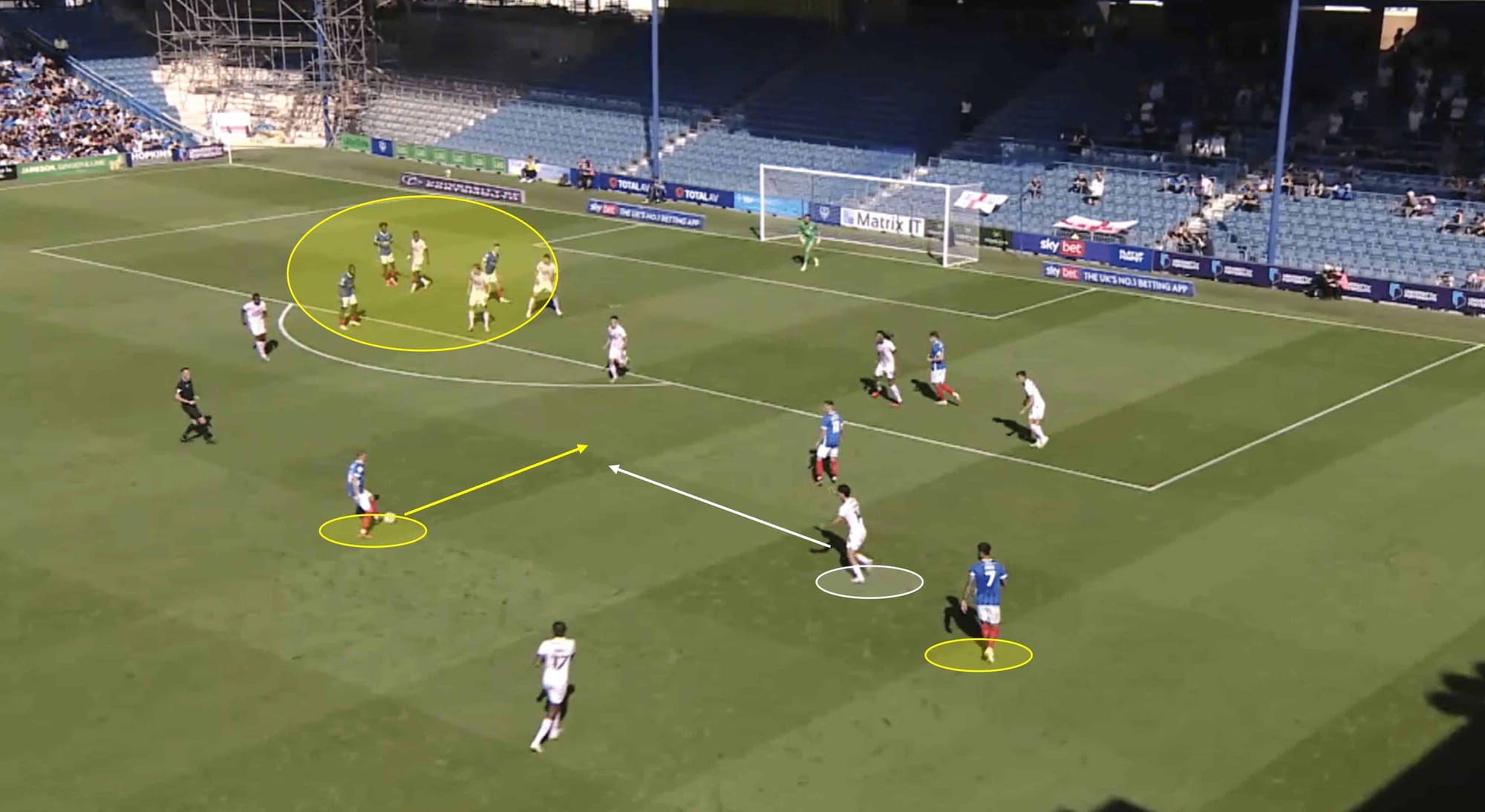
When we start to analyse their build-up play, we can quickly see that working the ball into space on the flanks is a key part of their tactical DNA, and they are even capable of manipulating the opposition’s position to open up space in wide areas.
The example above showcases this – the midfielder on the ball drives forward a few yards, causing a reaction from the opponent as their instinct is to stop the attacker running towards their goal.
The highlighted opposition midfielder gets sucked into this, leaving Marlon Pack in a huge amount of space on the right flank. It is also worth noting that the attacking unit of Pompey is already positioned in the box in anticipation on an eventual delivery.
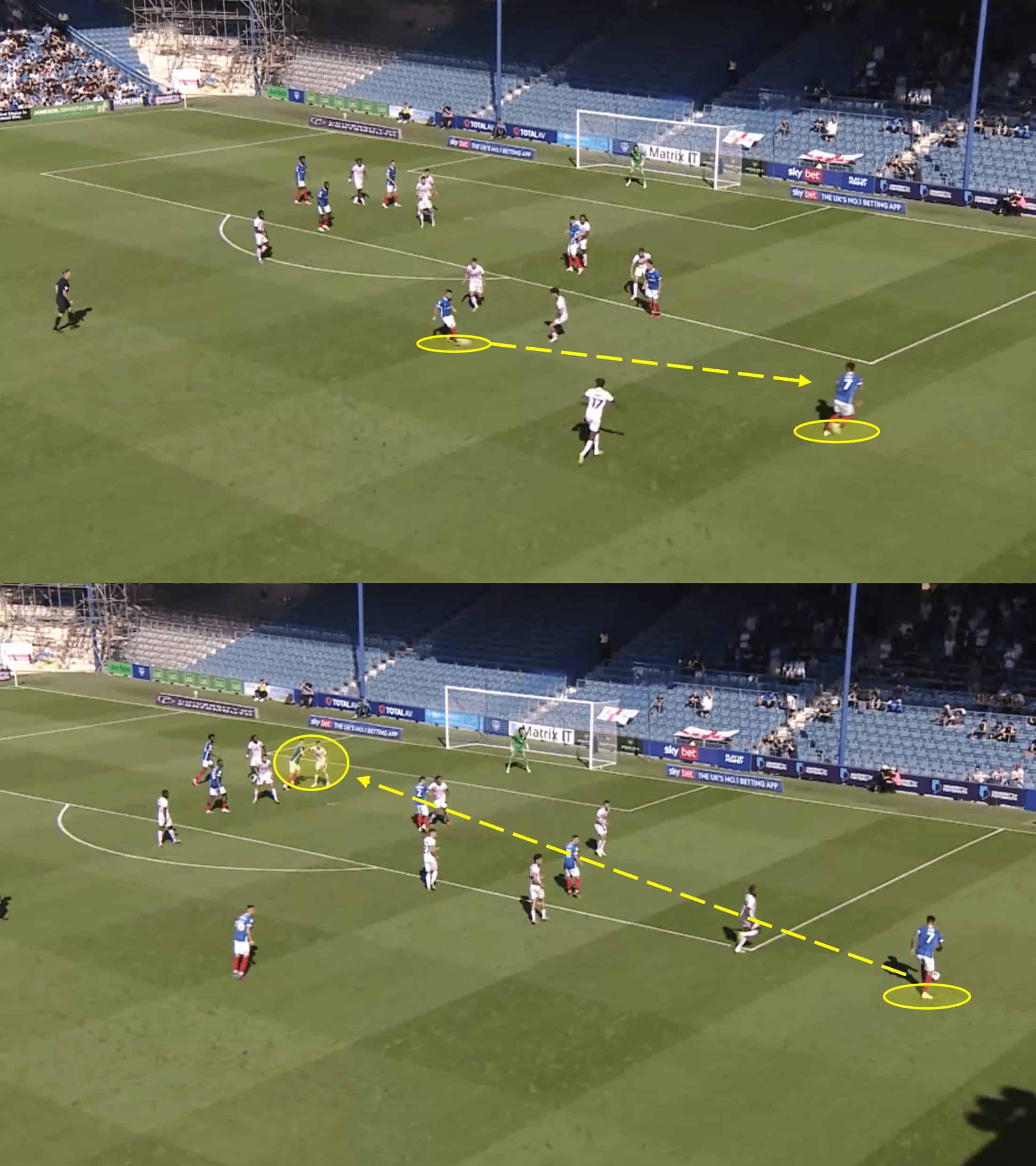
From there, while the content of the attacking move is somewhat simple in terms of tactical detail – and by that, we mean the fact that Pack collects the ball on the right flank, takes a touch, and whips a cross into the danger zone – the execution of these actions are exactly what make Portsmouth so dangerous from such areas.
The initial movement from Pack, the reliable first touch – and him knowing exactly what he’s going to do with the ball before he even receives it, the splendid cross, matched by Bishop’s impressive physicality in the box to beat the opposition defender to the ball, with the forward heading the ball into the net.
This goal symbolizes what Mousinho’s Portsmouth are about – moving the ball quickly with real attacking intent combined with a strong understanding of their tactical DNA.
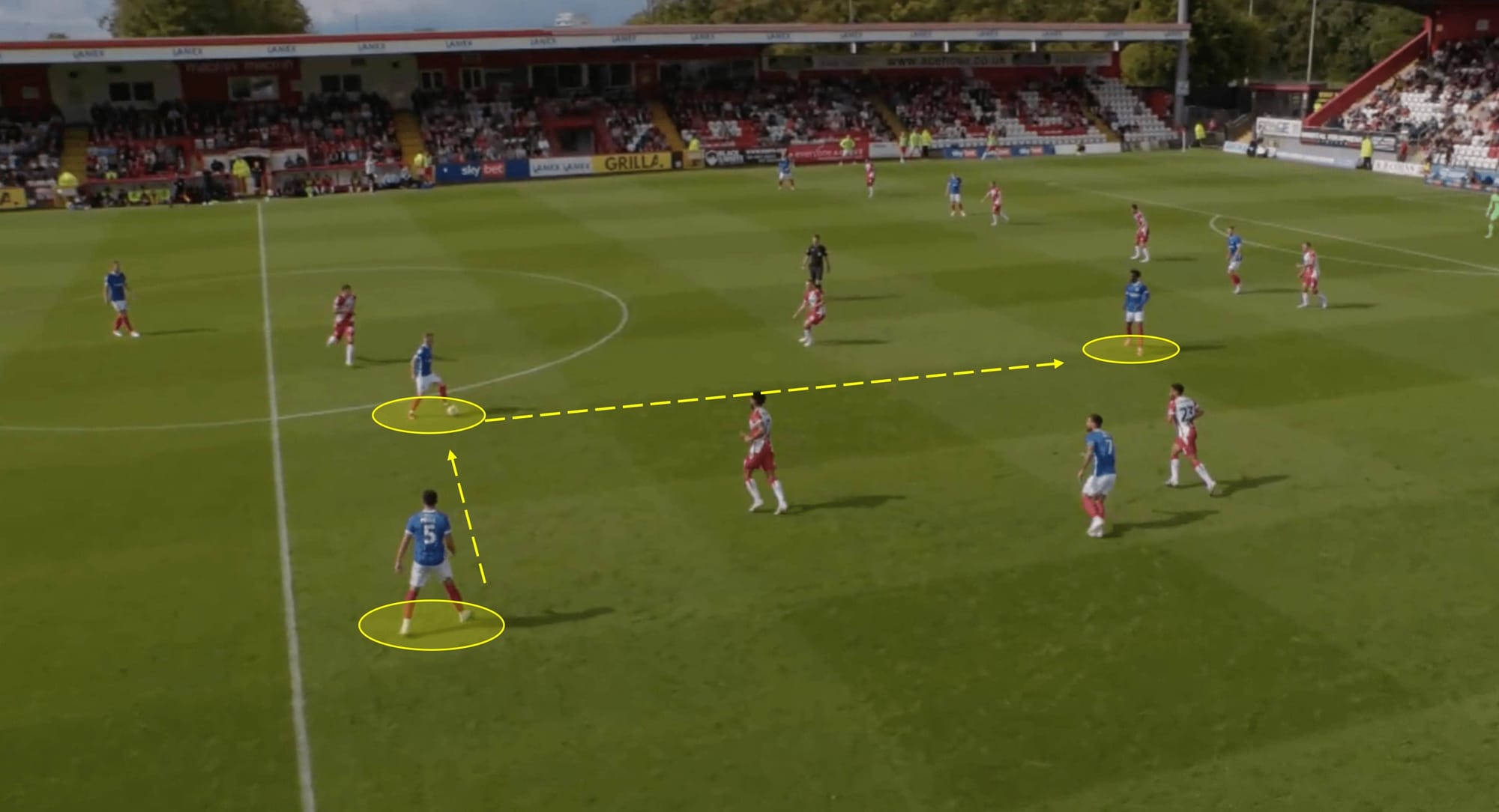
Another positive and noteworthy piece of statistical information is that so far this season, Pompey have been consistent in controlling possession – they rank second in the league for average possession after six games, averaging 57.7%. They often use this time on the ball to move the opposition as they look to open up space in more attacking areas, just like we see in the example above.
When they have possession in the middle third, Portsmouth look to keep the number of touches to a minimum with the aim of moving the ball quickly – which again links back to the aim of creating space in dangerous areas.
Abu Kamara is the blue shirt positioned in space just in front of the opposition backline, utilising his awareness to locate and exploit spaces in the final third. The Pompey number five, Regan Poole, is quick to shift the ball inside, with the midfielder matching Poole’s intensity and urgency by quickly moving the ball into Kamara.
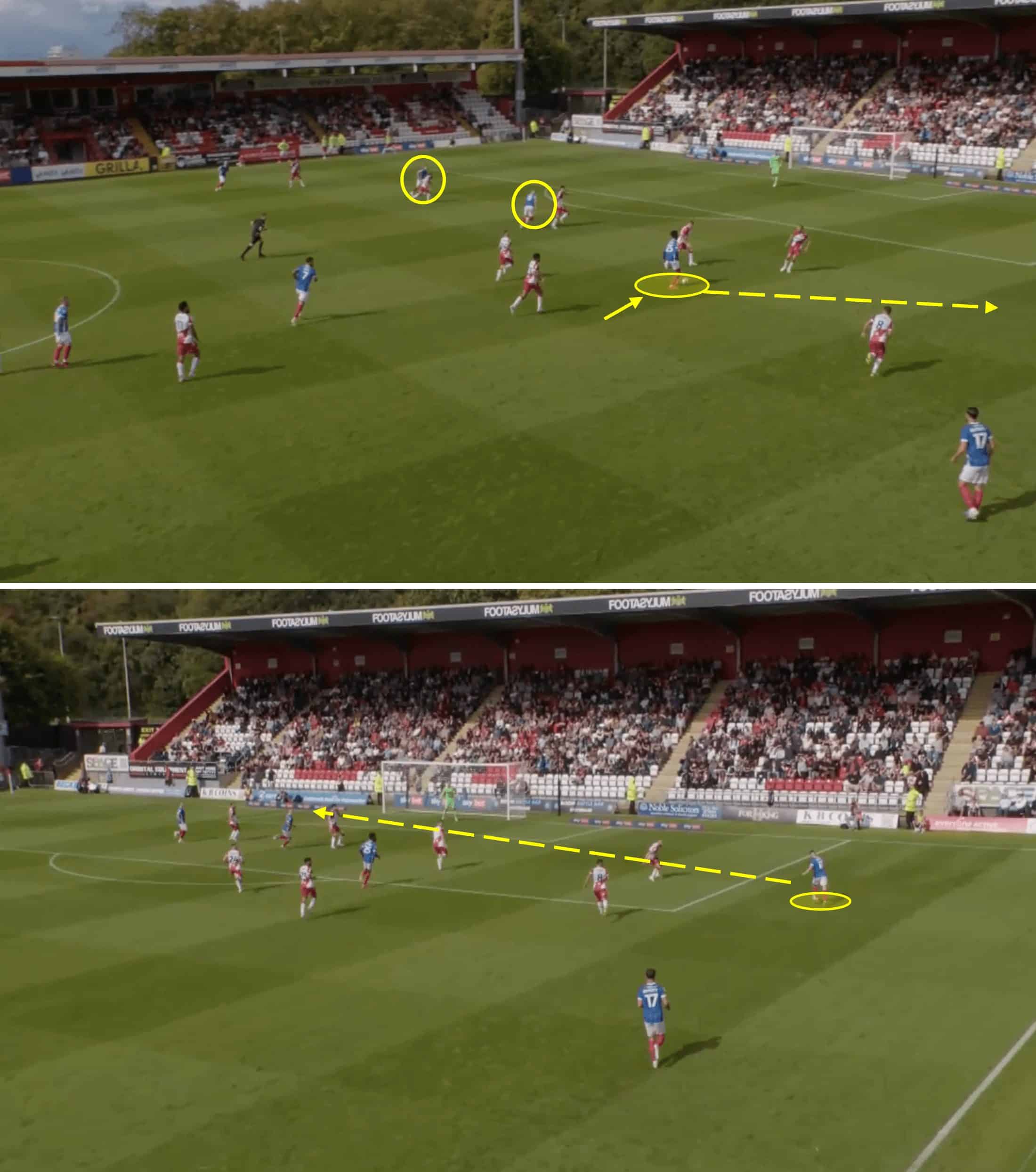
Kamara collects the ball and begins to drive toward the box, and the defensive reaction tells you all you need to know – there is a sense of panic almost as Kamara starts to dribble, an indication of his threat level. While other young dribblers in form would have been tempted to try and complete a mazy solo run, Kamara displayed good maturity and game awareness by moving the ball into the flank to his supporting teammate, who fired the ball across the face of goal with some venom. This move did not produce a goal but highlighted several key elements of Mousinho’s attacking tactics.
Conclusion
While Mousinho’s side has experienced inconsistency in terms of finding goals in League One so far, you can’t help but feel that the goals will start to flow soon enough if they can just fine-tune some of the mentioned issues. Generally, their possession and build-up play is strong and positive, and there is a clear tactical direction for which Mousinho deserves credit.
The trick for him now is to bring the best out of his attacking players to make all of the hard work and chance creation count. If they can maintain their strong performance and impressive defensive efforts, you should expect to see Portsmouth battling it out for promotion this season.






Comments